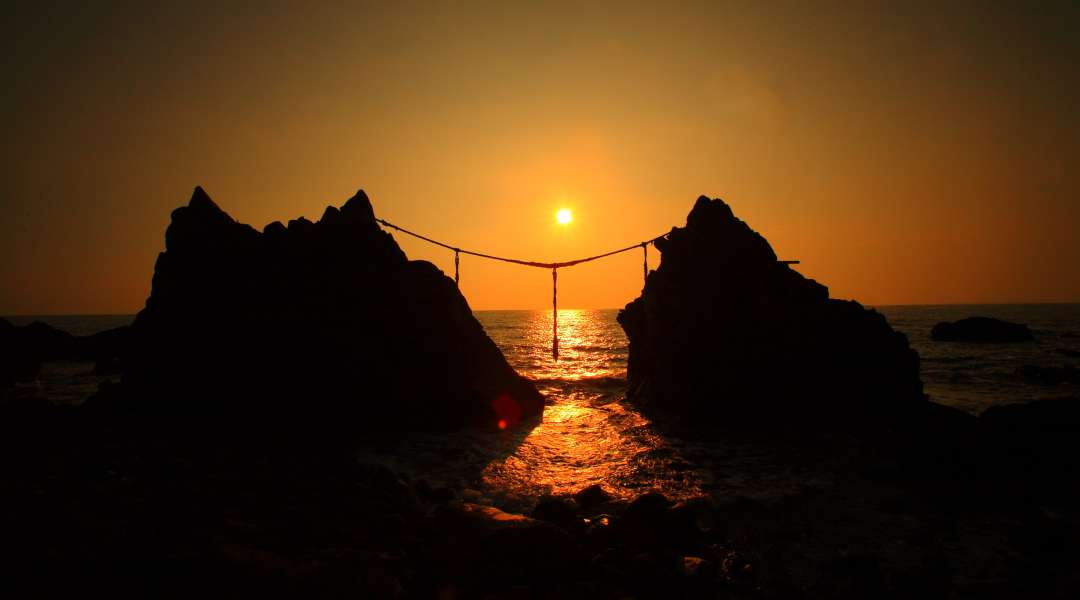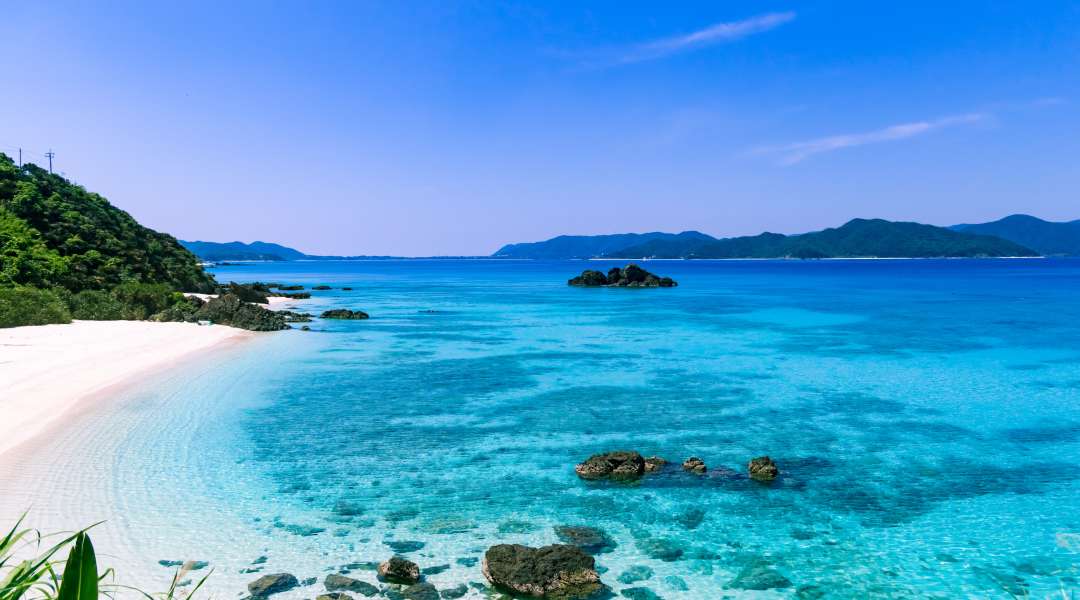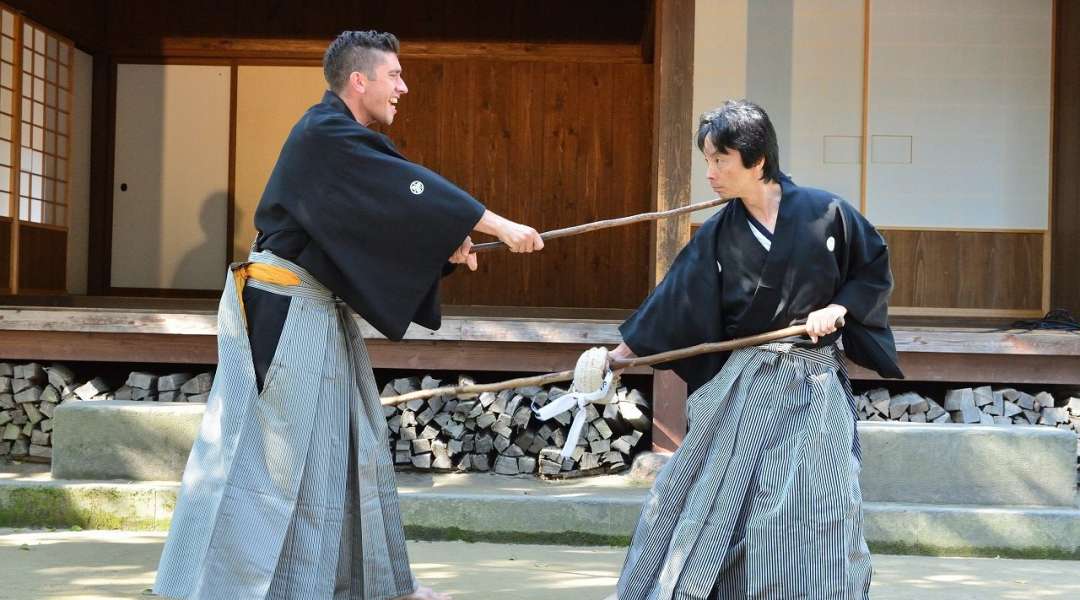
When it comes to culturally rich destinations with a wealth of scenic vistas and sun-splashed landscapes, Kagoshima maybe takes the cake. Located at the very southern tip of Kyushu, it's about as close to the Okinawan sunshine that you can get to on a bullet train line. It's also home to one of the most interesting Japanese stately homes and gardens, Sengan-en, which still remains in the hands of its original owners - the Shimadzu clan. Alex Bradshaw has spent well over a decade working closely with the Shimadzu clan at Sengan-en and has built a life in Kagoshima, far far away from the Yorkshire hills of Sheffield, where he was born. He shares his top tips and thoughts on why the area is so special.
Hey Alex! Could you tell us a little about yourself?
I'm from Sheffield originally, and have been living in Kagoshima for over 15 years. I got interested in Japanese culture as a kid when my mum brought exchange students from Sheffield University to our house for afternoon tea. I wondered where they came from and what these strange gifts were that they brought us.

We hear you were initially working at IT firm in the UK. How did you end up settling down in Kagoshima?
I worked for in a few IT companies after University, eventually ending up at Freeserve (we rebranded twice; Wanadoo then Orange) around the tail end of the dot com bubble. It was a fun place to work, but as the work environment started to get more corporate I felt I wanted to try something else and applied for the JET Programme because of my interest in Japan. I'd been practicing Japanese traditional sword arts for some time by this point and wanted to deepen my studies in Japan.

I ended up being placed in Kagoshima in the summer of 2005. After the contract on the JET Programme finished I worked in a few different jobs; English school owner, TV reporter, translator, University lecturer, eventually catching the attention of a company called Shimadzu Ltd.
Shimadzu Ltd. operates a UNESCO World Heritage Site called Sengan-en, which was the stately home and gardens of the Shimadzu clan, the feudal lords of this region for over 700 years.
I've been working for them as the Head of Overseas Business for the last five years. The company is still fully owned by the historic Shimadzu family, which has granted me some incredible opportunities to see a side of Japan that most Japanese people would never normally experience.

What makes Kagoshima so attractive for you?
For me I think it's the unique traditional culture of the region. For someone deeply interested in Japanese history and culture, working for what was one of the most powerful clans in Japan is an amazing experience in itself.
Digging deeper into the history reveals a fascinating connection between the geology of the region and the culture that has developed here. The location in the south and access to the sea made Kagoshima the perfect location to trade with foreign countries, and the Shimadzu clan did so illegally when the rest of Japan was closed to the outside world. This meant the food culture of the region was influenced by Okinawa and China, and meat was eaten regularly here when the rest of Japan was only eating fish and vegetables.
Kagoshima kind of does things its own way, regardless of what the rest of Japan is doing, and I like that rebellious attitude. Before I set off to Japan a kendo teacher from Osaka who I practiced with in the UK asked me where I would be living. When I said Kagoshima he replied, "That's not Japan, it's a different country!"

Where do you think our readers should visit in Kagoshima? Any suggested itinerary/ travel tips?
Kagoshima is certainly what I would call "undiscovered Japan". Being down in the south of Kyushu perhaps makes us a little harder to get to than some other regions, but the journey is worth it for more adventurous travellers looking to see a very different side of Japan.
The completion of the Kyushu Shinkansen back in 2011 certainly made it a lot easier to get here, now just 1 hour 17 minutes from Fukuoka on the fastest train. There are also regular domestic flights from the major airports.

For me Kagoshima is about the relationship between the natural geological environment and the culture that was born out of it. In terms of land area Kagoshima is Japan's tenth largest prefecture, but there are actually islands that go almost all the way down to Okinawa (605 of them!).
The natural variety from the mountainous Kirishima area in the north with amazing onsen, past one of the world's most active volcanoes Sakurajima looming over Kagoshima City, through the misty mountain forests of World Natural Heritage Site Yakushima (inspiration for the Ghibli animation Princess Mononoke), and on to the white sand beaches of Amami and Yoron over 400 km away make it totally unique in terms of natural diversity.

The balmy tropical weather and laid-back pace of life also make Kagoshima seem quite different to other regions of Japan. The comparatively small size of Kagoshima City (for Japan - the population is 600,000 so a large city for the UK) and compact city centre makes it easy to walk around, and there are plenty of bars, restaurants, and cafes open well into the night for visitors to enjoy.
Kagoshima is famous for its delicious food, and friends from Tokyo are always amazed at how fresh the produce is here. Being an agricultural region, there are plenty of farm to table restaurants using fresh local ingredients. The famous local Kurobuta pork and Kuroge Wagyu beef are a must try, and local spirit shochu is rapidly gaining international attention as the next big thing to come out of Japan.
For anyone visiting my top tips would be Sengan-en to see the stunning view of Sakurajima, the retro Meizan-bori area in Kagoshima City for dinner (and shochu) in a trendy restaurant with a feel of the Showa period. A boat trip to see dolphins swimming in Kagoshima Bay against the backdrop of active volcano Sakurajima is also a must. Then a trip by hydrofoil down to Yakushima for the fans of the mountains, or a plane to Amami if you're more of a beach bum.

For those with the budget, the absolutely stunning private resort Tenku in Kirishima is worth every penny. A plane trip around the volcano or to one of the smaller islands is a great add on for those looking for ultimate bragging rights. You can also make the journey here by helicopter if so inclined. Be warned it's not cheap and is almost constantly fully booked, often by celebs looking to escape from the world and find some tranquility.
Another option is to head over to Koshiki-jima, an island off the west coast of Kagoshima that has some really interesting local businesses and an up and coming boutique hotel run by locals called Fujiya Hostel.

Would you recommend hiring a car to see around Kagoshima? If so, how easy is it? If not, what options do we have?
Hiring a car is a great way to get around Kagoshima. Japan drives on the same side of the road as the UK, and traffic laws are pretty similar (the speed limit is a bit lower). Hiring a car can be done pretty easily with an international driver's license, and there are options at both Kagoshima Airport and Kagoshima Chuo Station. Satnav is now in English, and with Google Maps available it;s dead easy to find your way around.
For the more adventurous type I would definitely recommend trying out a camper van over on the Osumi Peninsula. This is real wilderness Japan and not for the novice traveller, but there are some spectacular spots hidden away one the other side of Sakurajima and Kagoshima Bay.
For those not inclined to drive there are regular local trains which can be a fun experience for day trips or overnights to the Kirishima or Ibusuki regions. JR Kyushu has a few themed 'hobby trains' that feature some unusual decor and make for memorable shots on Instagram.

We've seen you've started a new Instagram account documenting the local people of Kagoshima - how did that get started and how do you go about choosing content?
As well as working for Shimadzu I'm also the Director of Overseas Public Relations for Kagoshima Prefecture. We have two accounts on Instagram.
Feel Kagoshima (@feelkagoshima) mainly focusses on the scenery and landscapes that people can see when they visit the region. We choose a colour each month and curate shots to show the best of Kagoshima on that theme. With so much variation in the natural landscape of the Prefecture there are some really amazing shots. For tropical islands we just have to go down to Amami or Yoron, if we need mountain shots we can get them in Kirishima. Then of course there are the volcanoes!
People of Kagoshima (@kagopeeps) introduces interesting shops, restaurants, activities, and craftspeople through the personal stories of local Kagoshima people. I felt very strongly that travel is more about the people you meet and the connections you have than simply visiting a scenic spot. Most of the people featured are personal friends of mine that I have made in the last fifteen years living here. Japanese people can be a little bit shy with foreign people, and the language barrier makes it hard to communicate unless visitors speak Japanese well. I wanted to at least give the chance of showing what an amazingly diverse, nuanced, and interesting set of people live here instead of defaulting to the "weird Japan" narrative often used by the mass media.
If you want to find out more about Kagoshima and actually meet some of the people featured, make sure to follow us!

This month we’re looking at the Japanese word ‘Komorebi 木漏れ日’. As it means sunlight coming through the trees, or an obstruction making it easier to appreciate the day-to-day, can you tell us if there has been anything you've been able to re-appreciate since Covid-19 hit?
Komorebi is something I'm familiar with working at one of Japan's most beautiful gardens. The light breaking through the trees and falling onto the mossy steps around the back of the garden is one of my favourite places to take a stroll when work gets stressful.
We had to close Sengan-en from mid-April until August due to Covid-19, and visitor numbers are still low. This has meant I've had the chance to rediscover the tranquility of the gardens, and been able to appreciate views like this to myself after work.
Less visitors is a problem for us of course, but it has allowed us to run a series of private tours where only 20 people were allowed into the gardens at one time. This makes it much easier to appreciate how the gardens were originally enjoyed, and have given us some really useful ideas about the kind of direction we would like to take going forward.
Thanks for your time, Alex!
Remember to check out Sengan-en gardens here, or on instagram here


















































